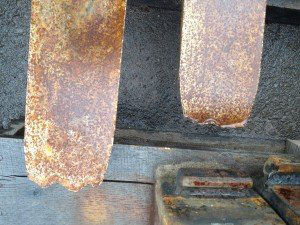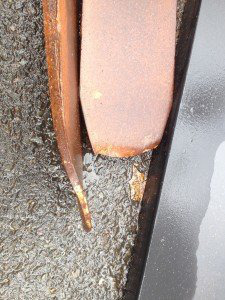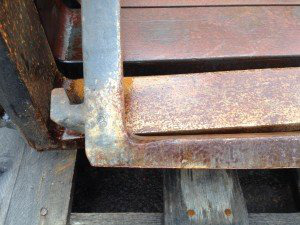According to OSHA, a fork that shows any of the following defects shall be withdrawn from service and discarded or properly repaired:

- Surface cracks
- Blade or shank is not straight
- Fork angle from the blade to the shank is not straight
- Difference in height of the fork tips
- Positioning lock not in working order
- Fork blade or shank wear
- Fork hooks wear
- Fork marking not legible

When should forks be inspected?
An inspection of your forklift forks should be at least every 12 months. Depending on the application, for instance multi-shift operation or rough working conditions, test intervals should be reduced. Also, operators of forklifts are responsible for carrying out regular visual inspections. The visual inspections should be at least daily. As soon as any defect is visible, the forks should be taken out of service.

Who carries out the inspection?
The yearly inspection should be carried out carefully only by trained personnel. That service should be provided by a reputable forklift service company. The daily visual check has to be done by the user with the aim of detecting any damage to the fork, which may impair safe use. Any fork, which shows a defect, shall be withdrawn from service.
Who carries out repairs?
Only the manufacturer of the fork arm or an expert of equal competence shall decide whether and how a fork may be repaired. Forks with any surface cracks or wear have to be scrapped. When repairs necessitating re-setting are required, the fork arm shall subsequently be subjected to an appropriate heat-treatment, as necessary. In case of some repairs the fork shall only be returned to service after passing a load test in accordance with the relevant standard.
